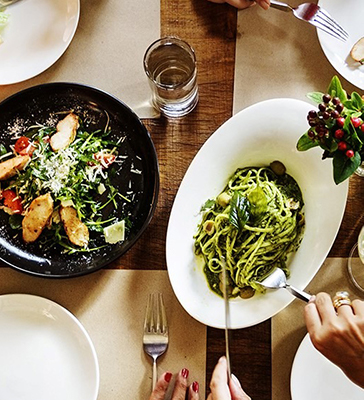

Embracing Restaurant Trends in 2023
The restaurant industry has always been a dynamic and constantly changing field, shaped by changing customer preferences, economic factors, and societal trends.
In recent years, we’ve witnessed a significant shift in the way restaurants approach their menus and promotions. The focus has shifted towards streamlining menus by reducing “nice to have” items like wine and desserts while emphasizing promotions to attract and retain customers. Let’s explore these restaurant trends and their implications for both diners and restaurateurs.
Streamlining Menus
Streamlining menus in the restaurant industry refers to the practice of simplifying and reducing the number of menu items offered to customers. Instead of having extensive menus with a wide variety of dishes and options, restaurants focus on offering a more concise and curated selection of dishes. This approach has gained popularity for several reasons:
- Efficiency: A concise menu allows kitchens to operate more efficiently, reducing preparation time and minimizing waste.
- Cost Savings: A smaller menu reduces the need for a wide variety of ingredients, cutting down on inventory costs and food waste.
- Quality Control: Focusing on a limited selection of dishes enables chefs to perfect their recipes, ensuring consistently high-quality meals.
- Speed of Service: Simplifying menus can result in faster service, a crucial factor in today’s fast-paced world.
- Adaptability: A concise menu is more adaptable to changes in customer preferences and dietary trends. It’s easier for restaurants to introduce new dishes or modify existing ones to align with evolving tastes.
- Staff Efficiency: A simpler menu can lead to greater kitchen efficiency, with staff specializing in specific dishes and streamlining their workflow. This can reduce labor costs and enhance overall productivity.
- Marketing Focus: An optimized menu allows restaurants to focus their marketing efforts on a select few signature dishes, promoting them as their specialties. This can help create a stronger brand identity.
Reducing “Nice to Have” Items
While wine and desserts have long been restaurant staples, some establishments are scaling back on these “nice to have” items in favor of a more focused dining experience. Here’s why this trend is gaining traction:
- Health Consciousness: Many diners are becoming more health-conscious, opting for lighter meals and skipping indulgent desserts and alcoholic beverages.
- Cost-Consciousness: Dining out can be expensive, and diners are increasingly looking for affordable options. By reducing pricey items like wine and desserts, restaurants can offer more competitive prices.
- Cost savings: Nowadays, customers tend to choose main dishes, making it expensive for restaurants to purchase ingredients that may end up unsold, as consumers try to save money while dining out.
- Flexibility: A more streamlined menu allows restaurants to adapt to changing trends and dietary preferences more easily.
Emphasizing Promotions
In today’s competitive restaurant landscape, promotions have become a valuable tool for attracting and retaining customers. Here are some key promotional strategies restaurants are employing:
- Happy Hours: Offering discounted drinks and appetizers during specific hours can draw in after-work crowds and boost revenue.
- Weekly Specials: Featuring rotating weekly specials can create excitement and encourage repeat visits.
- Loyalty Programs: Offering discounts, freebies, or exclusive offers can foster customer loyalty
- Online Ordering Discounts: Restaurants are increasingly promoting their online ordering and delivery services through exclusive discounts and offers available only to customers who order through their websites or apps.
- Limited-Time Offerings: Creating a sense of urgency and exclusivity, limited-time menu items or promotions, such as seasonal specials or collaborations with local businesses, can drive customer engagement.
- Discount Bundles: Offering bundled deals, where customers can get a combination of items at a discounted price, it is a strategy to increase the average check amount and provide perceived value.
- Family or Group Deals: Family-friendly and group-oriented promotions, like “Kids Eat Free” nights or group discounts for larger parties, cater to a broader customer base.
- Brunch and Breakfast Promotions: Weekend brunch promotions and breakfast deals are becoming more popular as consumers seek diverse dining experiences.
- Social Media Contests and Giveaways: Engaging customers on social media through contests and giveaways can boost online presence and encourage customer participation.
- Health and Wellness Promotions: As health-consciousness grows, restaurants may offer promotions centered around healthy menu items, such as “Salad Days” or discounts on low-calorie options.
- Sustainability Initiatives: Some restaurants promote sustainability by offering discounts to customers who bring their reusable containers or by highlighting eco-friendly menu choices.
The restaurant industry is ever-evolving, and staying current with trends is essential for success. The shift towards streamlining menus by reducing “nice to have” items like wine and desserts while emphasizing promotions reflects the changing preferences and economic realities of diners and restaurateurs alike. By embracing these trends, restaurants can enhance efficiency, reduce costs, and appeal to a broader customer base.
LAST NEWS



